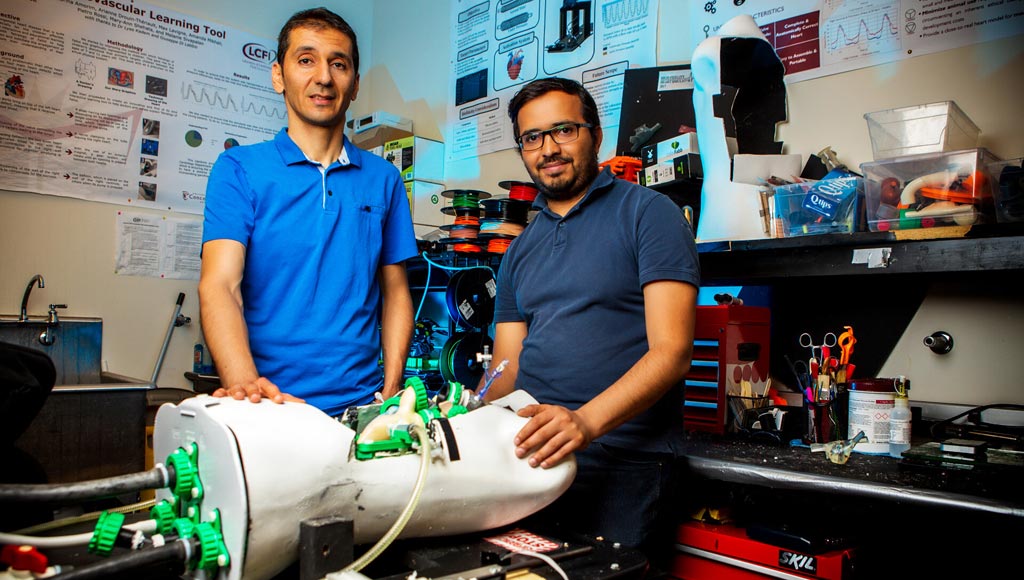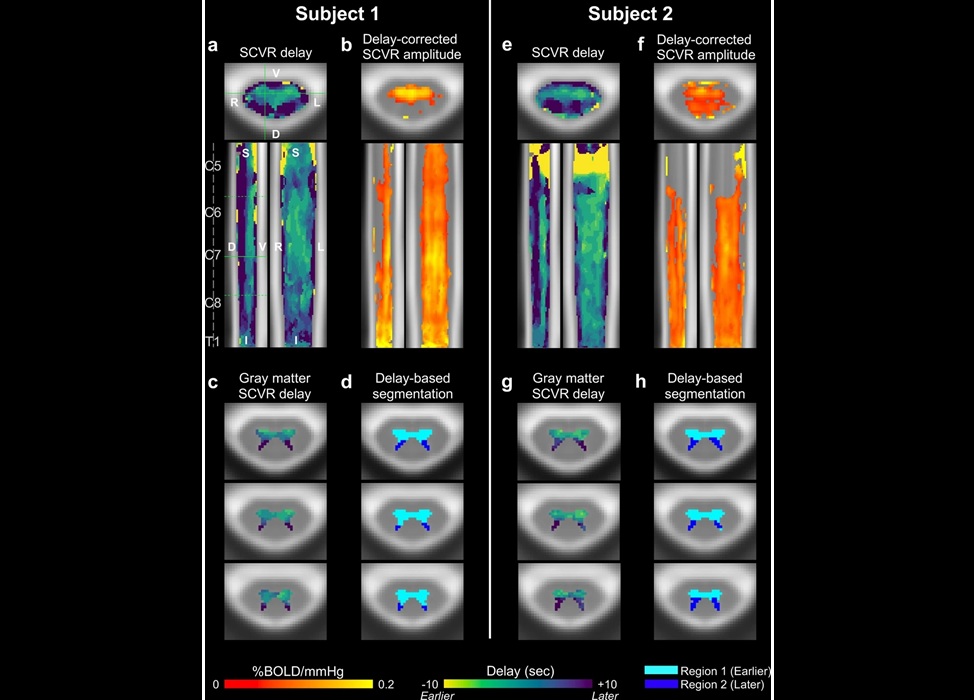Phase-Contrast MRI Can Evaluate Artificial Heart Valve Function
By MedImaging International staff writers
Posted on 10 Jul 2019
Radiation-free, non-invasive phase-contrast magnetic resonance imaging (MRI) can detect obstructions in bi-leaflet mechanical heart valves (BMHVs), according to a new study.Posted on 10 Jul 2019
Researchers at Concordia University (Montreal, Canada) and Hashemite University (Zarqa, Jordan) conducted an experimental study using time-resolved planar particle image velocimetry in order to investigate flow characteristics in the ascending aorta in the presence of a dysfunctional BMHV. The equipment used included a custom double-activation left heart duplicator, a high-speed camera, and a laser. Blood flow patterns resulting from six different heart valve blockages were simulated by photographing particles immersed in a liquid that mimics blood and pumping the fluid through the heart duplicator.

Image: Professor Lyes Kadem (L) and the custom double-activation left heart duplicator (Photo courtesy of Concordia University).
Several configurations of leaflet dysfunction were investigated, and the induced flow disturbances in terms of velocity fields, viscous energy dissipation, wall shear stress, and accumulation of viscous shear stresses were evaluated. The researchers also validated a new set of parameters, based solely on the analysis of the normalized axial velocity profiles in the ascending aorta, to detect BMHV dysfunction and differentiate between different leaflet configurations (clear of obstruction, partially obstructed, and fully obstructed).
The results showed that BMHV dysfunction leads to a complex spectrum of flow disturbances, with each flow characteristic evaluated having its own worst-case scenario, in terms of dysfunction configuration. The researchers suggest that a phase-contrast MRI approach based on the analysis of the normalized axial velocity profiles in the ascending aorta has the potential to discriminate not only between normal and dysfunctional BMHV, but also between the different leaflet dysfunction configurations. The study was published on May 8, 2019, in Artificial Organs.
“Imagine you are outside a stadium and the crowd is leaving from three gates next to each other. If the gates are open, you will see a uniform distribution of people leaving from all three openings,” explained senior author Professor Lyes Kadem, PhD, Concordia research chair for cardiovascular engineering and medical devices. “If one gate is closed, you will see more people leaving from the two others, and none from the one that is closed. Therefore, you will deduce that there is a blockage.”
Related Links:
Concordia University
Hashemite University














